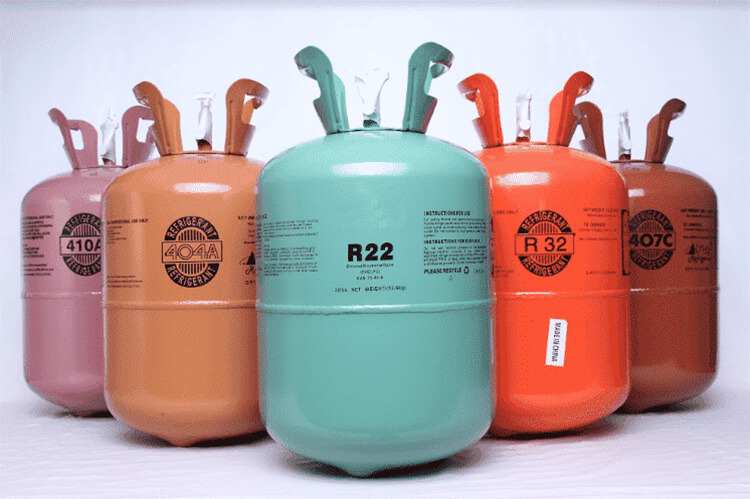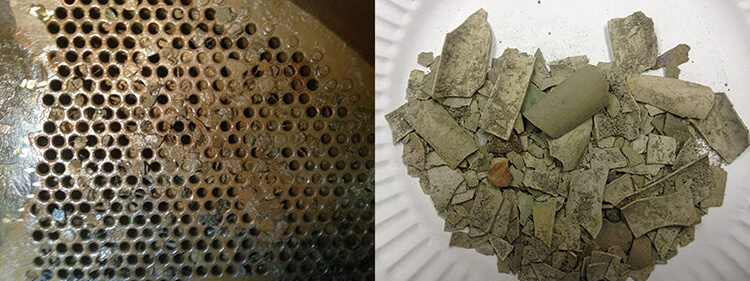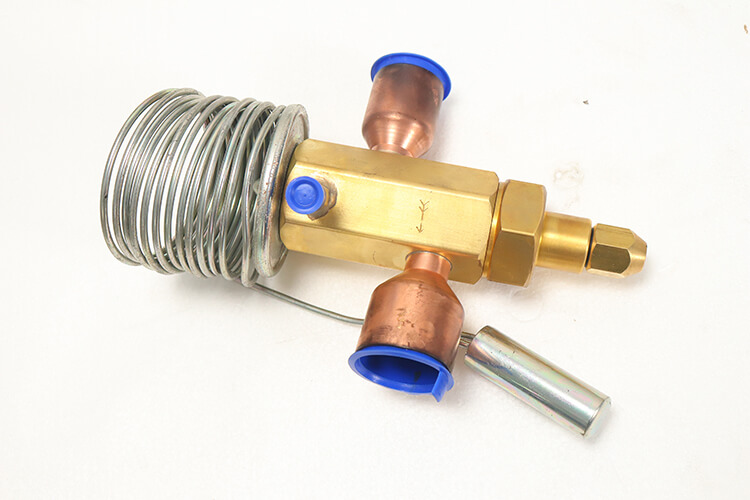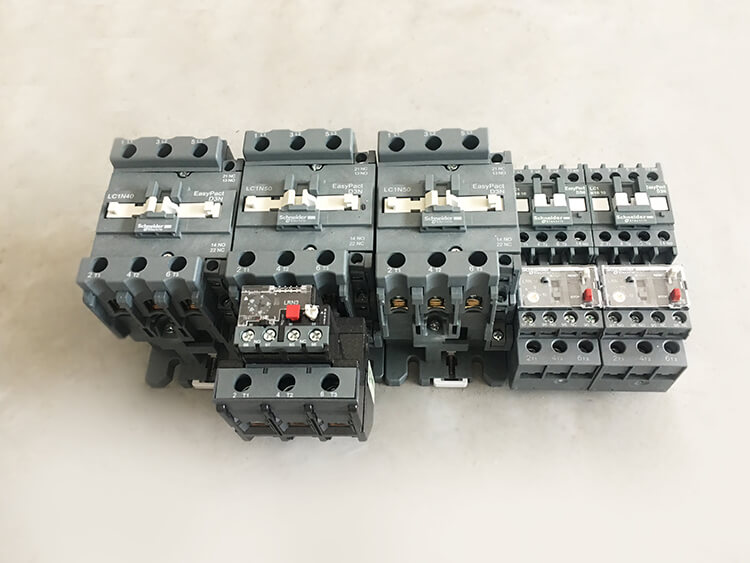What Issues Can Arise from A Chiller’s Low-pressure Failure?
1. Surge in Energy Usage
A chiller experiencing low-pressure failure can lead to an inefficient use of energy. When the compressor operates at low pressure, the motor load decreases, resulting in wasted energy under identical cooling conditions.
2. Diminished Cooling Efficiency
Low-pressure issues can negatively impact the cooling capacity of the chiller. Reduced suction pressure can lead to a decrease in return air volume, making it challenging for the chiller to reach its target cooling capacity. This could significantly hamper the chiller’s efficiency and performance.
What Are the Causes of Low Pressure in Chillers? How to solve it?
1. Insufficient Refrigerant or Leakage
A lack of sufficient refrigerant in the system can result in reduced suction pressure, leading to a low-pressure alarm, and ultimately, unit shutdown.

Solution: Potential refrigerant leaks can be identified at the junctures of components such as the compressor, condenser, filter, expansion valve, and evaporator. Once the leak is rectified, restoring the refrigerant to the appropriate level should alleviate the problem.
2. Low Ambient Temperature
If external temperatures are low, it may cause the cooling water and compressor oil temperature to drop as well. Starting the chiller under these conditions might trigger a low-pressure fault alarm. Solution: If the cooling water temperature is excessively low, either shutting off the cooling tower fan or throttling the cooling water can raise its temperature. If the compressor oil temperature is low, increasing the chiller’s preheating duration should allow the oil temperature to normalize.
3. System Pipeline Blockage
Impurities can infiltrate the system during the chiller assembly process or over time, and excessive buildup can clog the filter, restricting the refrigerant passage and return air, resulting in a low-pressure fault.

Solution: Cleaning the filter, condenser, and evaporator should clear any blockages and restore the chiller’s operation.
4. Expansion Valve Opening Too Small or Damaged
The expansion valve regulates the refrigerant flow in the system. If its opening is too small, it restricts the passage of refrigerant vapor. Insufficient refrigerant steam can lower the compressor inlet pressure, leading to a low-pressure fault.

Solution: Increasing the opening of the expansion valve or replacing it if damaged should rectify the issue.
5. Relay Failure or Electrical System False Alarm
The relay serves as an indirect protective device. Normal compressor suction pressure ranges from 0.4 to 0.6MPa. If the suction pressure drops below 0.2MPa, it triggers the low-pressure protection relay, causing the chiller to stop running. Sometimes, moisture or circuit malfunctions can cause the low-pressure relay to work incorrectly.

Solution: Inspecting and repairing or replacing the low-pressure relay should address the issue. If you’re not technically savvy, reaching out to the manufacturer for assistance is recommended.
Also looking for high-pressure alarm troubleshooting? Check this.

So amazing ,detailed, brief but with adequate content am loving this
Alarme de alta pressão não para e não resfria.
Help, I serious problem my chiller stop at low / high pressure
Hi, could you kindly send us an image of the alarm? and please specify the chiller details.
Hola tengo un problema con una cuarto de congelación de menos – 18 grados salta por baja presión avería se me puedes ayudar gracias
No tenemos equipo local en su localidad, lo sentimos
Hola buenas
Cuanto de gas 407 lleva un chiller?
Merci pour ce que vous faites vos explications permettent même aux profanes de comprendre ce qui arrive à son unité de refroidissement.
Merci, nous sommes heureux de partager ces connaissances pour aider le plus grand nombre de personnes possible.
hi
DEAR SIR, I HAVE YORK AIR COOL CHILLER ESSUS LOW SUCTION PRESSURE ALARM AND LIVING AND OUT WATER TEMP- IS LOW IN 5 C AND OUT 2C SO WHAT IS ESSUS MY CHILLER PLEASE HELP ME
Hi I have (husky )Rrigel chiller it has alarm circuit b overload power ok low pressure gauge shows zero what could be cause
Boa tarde meu Chile mecalor tá com alarme alt proteção lop02 que pode ser
My water cooled chiller brings oil delta pressure alarm after short while, this after overhaul and tube replacement. What could be the problem
Selamat pagi, penyebab low temperatur hold apa ya pak dan cara penanganannya bagaimana? Mohon bantuannya pak. Terima kasih
Chiller mc quay sering ngayun dengan RLA naik turun… Itu penyebabnya apa pak?
Hola a todos, tengo un problema con un chiller trox con compresor marca bitzer typ CSW 9583-180 Y-400, al comenzar con una carga de 30° me tira falla, baja presión de diferencial de aceite solo lo hace al comienzo, que puede ser?
my chiller won’t hold pressure. pump kicks in and out. when this happens pressure falls back to zero. pump is pulling too many amps and kicks out. could this be due to a faulty flow switch or bypass sensor
Temos um chiller grande para uma loja de 2000 m² e tem 2 maquinas de ar condicionado tambem bem grandes para toda a loja, mas o Chiller simplesmente nao liga, ja tentamos de tudo e parece que a energia não chega nele e por isso as maquinas de ar condicionado não conseguem refrigerar a loja
Bonjour,
J ai une alarme sur un groupe eau glacée MCQUAY .
haute pression differanciel de l huile . D ou ça peu venir malgré que la haute et la basse pression sont correcte
This troubleshooting guide for low-pressure alarms in industrial chillers is incredibly helpful. The article accurately highlights the adverse effects of low pressure, such as increased energy consumption and reduced cooling capacity. The causes of low pressure, including refrigerant leakage, low ambient temperature, pipeline blockage, and faulty expansion valves, are well-explained. The provided solutions offer practical steps to address each issue effectively. This comprehensive guide is a valuable resource for chiller maintenance and troubleshooting.
Alarme de alta pressão não para e não resfria.se por gentileza puder me ajudar agradeço.
hola tengo problema en mi chiller york limitando descarga
Hola tenemos un Chiller McQuay y últimamente se alarma por falla de sensor de temperatura de descarga,el especialista comenta que hay que desconectar el sensor,limpiarlo,ajustar la válvula solenoide y que con eso queda,¿Eso es cierto? y otra duda que tengo es a veces aparece una advertencia (Low OAT Lock) me podría decir que significa y como remediarlo.